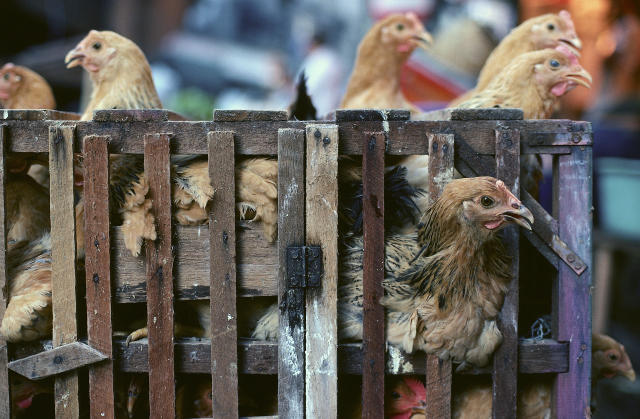How concerned should we be about H7N9 flu?
Posted on February 24, 2017 by Benjamin Thompson
The past few weeks have seen an increasing amount of coverage about an ongoing outbreak of the H7N9 strain of avian influenza in China (often called ‘bird flu’).

Reports suggest that in January almost 200 people were confirmed as being infected with the virus, of whom 79 died. The WHO indicates that many of the people infected were likely to have been exposed to poultry or have been to environments where live birds are kept. This is in keeping with how the vast majority of human infections have occurred since the strain first emerged in 2013.
Does this year’s H7N9 outbreak represent something of wider concern? What are the chances that the virus will evolve and gain the ability to be transmitted between people, rather than from poultry to people? We asked Microbiology Society member Wendy Barclay, Professor of Influenza Virology at Imperial College London.
“I’ve got no inside knowledge other than what’s been reported, but I think that what we’re seeing is the annual trend in H7N9. Around this time of year, we nearly always see a burst of cases, likely because the climate in Southern China is perfect for flu transmission – it’s cold and dry, and quite good for the virus surviving in the environment.”
Earlier this week, evidence from China has shown that one of the surface proteins on the virus has mutated, allowing it to spread to any organ within a chicken, rather than just their intestines and respiratory tracts. This is clearly bad news for the birds, and the increased viral load might in turn result in an increased number of human cases. On the other hand – as was seen for H5N1, the other highly pathogenic bird flu – a virus that kills birds should be easier to spot and control than one that does not. But what is the current risk of H7N9 turning into even more of a public health risk?
“I don’t think that there is any reason to believe that the H7N9 that’s out there now is currently any more likely to cause a pandemic than the one that emerged in 2013,” Wendy explains. “We know that this virus can pass from chickens into humans, but we also know that it doesn’t appear to have the mutations required for person-to-person transmission.
“Genetic barriers still exist – H7N9 doesn’t have the mutations on its external proteins that would allow it to be transmitted through the air, or allow it to be stable enough to survive in the human respiratory tract.”
While the WHO say that at the current time there is “no evidence of sustained human-to-human transmission”, Wendy recommends that H7N9 requires close attention.
“Pandemic flu is rightly one of the top worldwide threats of most concern to researchers and public health officials, but while this current virus is the one that currently causes us the most worry, there are others out there in chickens, pigs and ducks that are also possible pandemic precursors. We continue to try to understand how better to predict which viruses will actually make it across the species barrier and how best to deal with them when they do.”
Professor Barclay is an Editorial Board Member of the Microbiology Society’s Journal of General Virology (JGV) and a winner of our Peter Wildy Prize. You can find out more about her work here.
You can read JGV’s collection of papers on avian viruses here.
